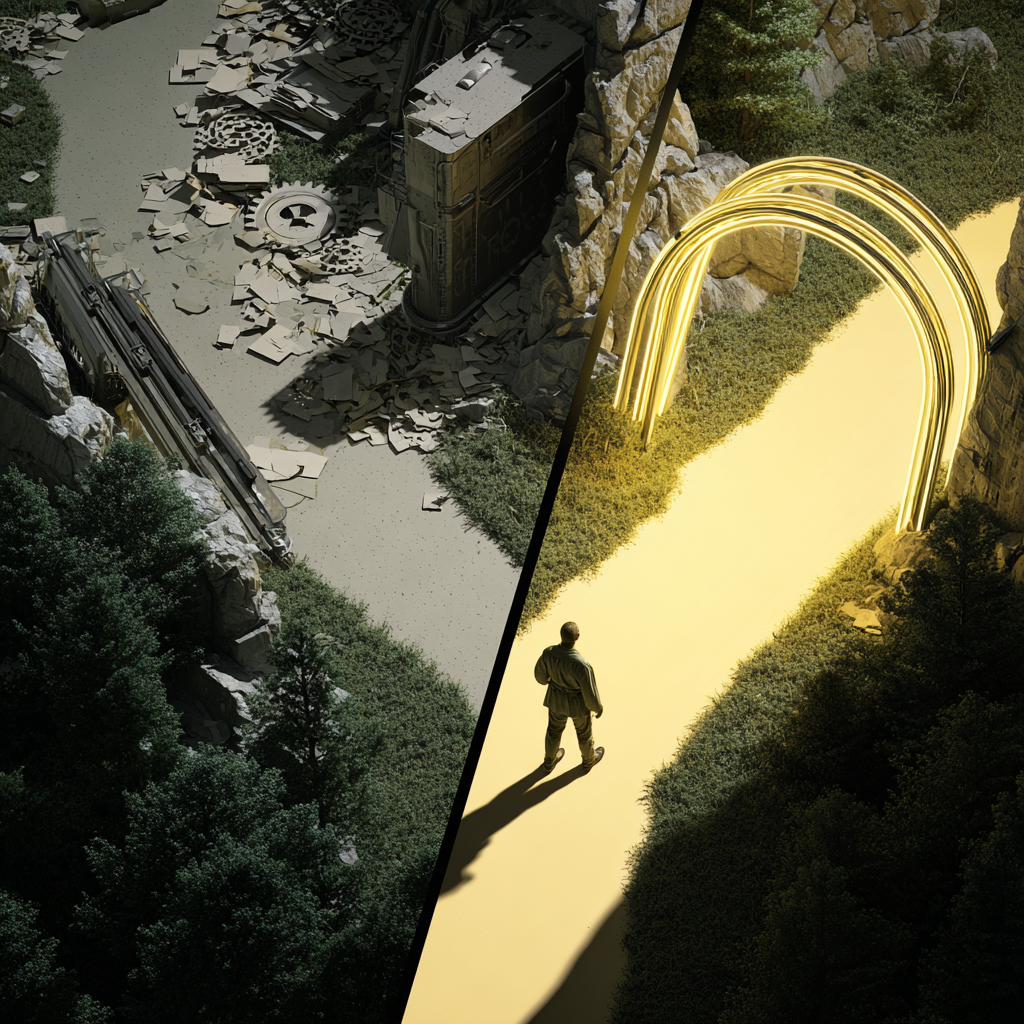Better Bets, Not Bigger Burdens: Why "Agile+AI" Isn’t Delivering the Gains
Most teams are “doing agile” but really just running faster on old rails. Layering AI on top of that doesn’t deliver transformation — it just adds noise. Real gains come from rethinking org design and process flow so AI fuels iteration, not bigger burdens.

The Illusion of Agility
Most organizations think they’re agile. They have Jira boards, daily stand-ups, sprints, retros. On the surface, it looks modern. But in practice? It’s still waterfall delivery dressed up in rituals:
- Heavy upfront requirements written as if certainty is possible.
- Development squeezed in the middle, where speed is demanded but learning is not.
- QA bolted onto the end, still inspecting instead of enabling.
That isn’t agility. That’s yesterday’s model in new clothes. And strapping AI onto it won’t change anything — it just makes the treadmill run faster.
Why Speed Alone Doesn’t Move the Needle
AI is already accelerating code generation, test creation, and backlog grooming. But if the system around those activities doesn’t change, the gains disappear into throughput.
- Requirements stay frozen → assumptions harden into contracts.
- Dev is pressured for velocity → more tickets, not better bets.
- QA remains downstream → quality is still “checked in” at the end.
The result is familiar: faster burnout, not better outcomes.
Legacy Systems Are Real — But So Are Better Techniques
Some work really is harder. Legacy stacks don’t just bend to prompts. Old databases, brittle services, and half-documented APIs still need careful handling. Pretending otherwise is naïve.
But the answer isn’t giving up or just asking AI harder questions. The answer is:
- Progressive modernization → move incrementally, building loops that let you refine as you replace.
- Push it back on track → correct drift instead of abandoning the attempt.
- Learn new techniques → treat friction as fuel for new patterns like context transfer across repos, scaffolding old systems, or layering evaluation loops.
- Embrace imperfection → wrong turns aren’t failure, they’re signals that surface hidden dependencies.
- Context transfer with tooling → pull knowledge across repos, not just into prompts.
Legacy modernization isn’t solved by perfect instructions. It’s solved by compounding learning loops where every misstep pushes the work forward.
Better Bets, Not Bigger Burdens
The central shift is this: gains from AI and automation should not become bigger burdens. They should become better bets.
That means reinvesting speed and efficiency into:
- Iteration over certainty → treat requirements as hypotheses to be tested.
- Exploration without guilt → create permission to throw away ideas that don’t pan out.
- Quality at the source → developers test as they build, QA curates and explores.
Without this, AI just papers over the cracks of an outdated delivery model.
Org Design as the Differentiator
The difference between companies who realize big gains and those who don’t isn’t tools. It’s org design and process flow.
- Collapsed silos → product, engineering, and quality working as one loop.
- Continuous refinement → exploration → refinement → production, instead of conveyor-belt handoffs.
- Shifted incentives → validated learning is rewarded, not raw ticket output.
This isn’t about squeezing harder. It’s about restructuring the flow so that gains compound into value.
The Inner Work of Letting Go
And here’s where the personal journey comes in — the death of the hero that I wrote about in my Jungian essay. Leaders, PMs, and engineers alike have to let go of the illusion of control.
The old hero narrative says: if you define requirements perfectly, manage tightly, and inspect everything at the end, you can will perfect software into existence. That myth dies hard.
But agility — real agility — asks us to accept uncertainty. To step out of control and into trust:
- Trust that iteration beats prediction.
- Trust that throwing away bad bets is strength, not weakness.
- Trust that teams learn faster when they’re free to refine, not bound to a spec.
This isn’t just organizational change — it’s personal change. Leaders must go on their own journey of letting go, or else they’ll unconsciously rebuild the same waterfall scaffolding around every new tool, including AI.
Flow Over Fantasy
The fantasy is perfect plans, perfect output, perfect predictability. That’s waterfall thinking in agile clothing. The reality is flow:
- Explore → try, test, discard.
- Refine → build depth once value is proven.
- Produce → stabilize, scale, deliver.
AI’s real gift is lowering the cost of exploration. But without organizational and personal willingness to let go of control, that gift is wasted.
The Call to Leaders
If you’re leading teams today, the question isn’t: how do we do more?
It’s: how do we give ourselves permission to do less, better?
That requires courage. It requires letting go of the myth of control — the same myth that kept waterfall alive for decades. And it requires redesigning not just your processes, but your own expectations as a leader.
👉 Bottom line: Until both the org and the people inside it let go of old patterns, every gain AI provides will get eaten alive by the baggage of the past. True transformation isn’t just technical. It’s structural and personal.